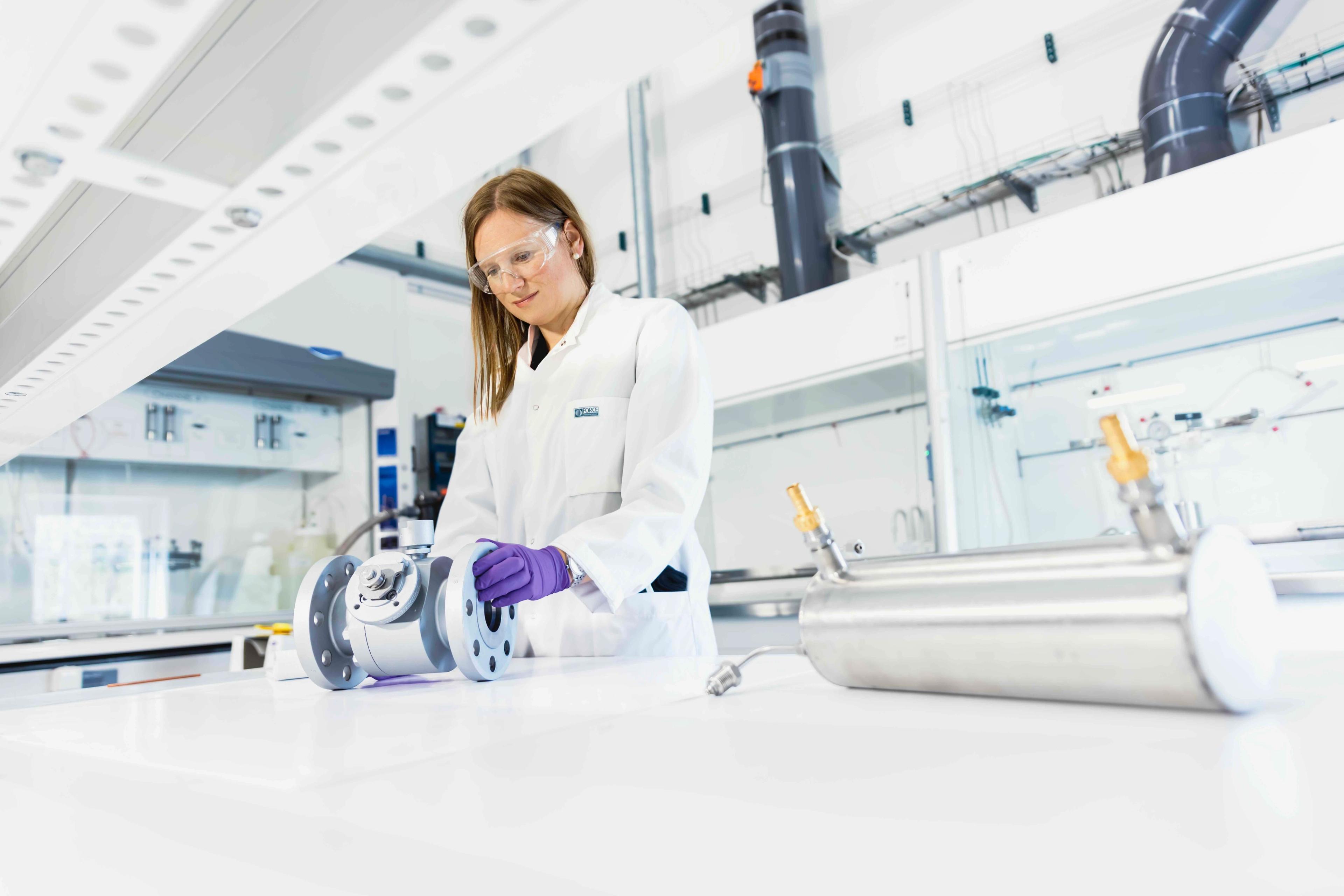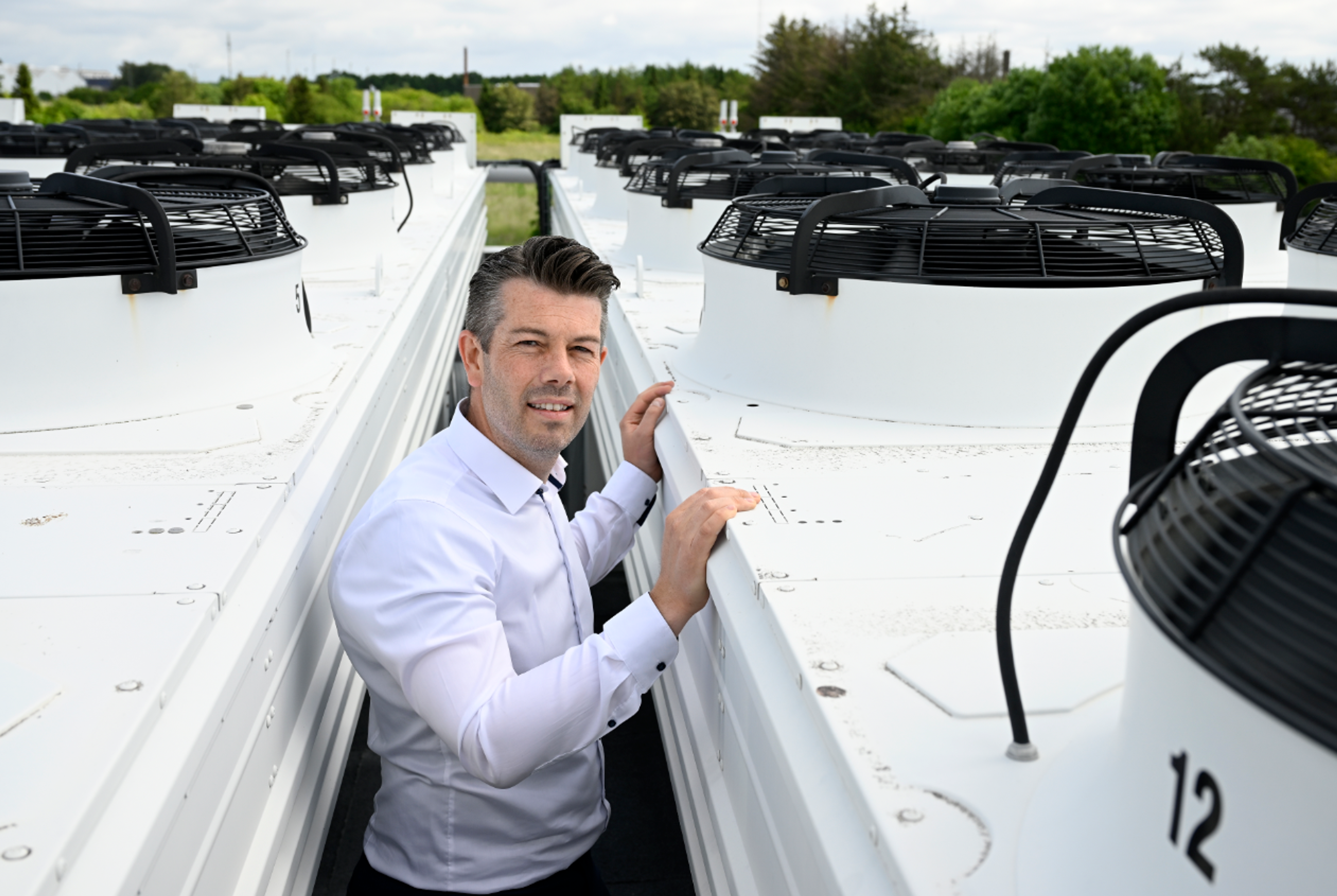Hydrogen and the standards: Will the pipes stay tight in a green reality?

Can the current gas infrastructure be used for hydrogen – the true escape artist among gases? That is what the hydrogen value chain is investigating in an innovation project supported by the Just Transition Fund.
The North Sea’s offshore wind farms are the cornerstone of the green transition. Beyond enabling the electrification of everything that can be plugged in, offshore wind must also be converted into hydrogen to supply all of Europe with a climate-friendly alternative to natural gas.
But: Can we actually transmit hydrogen through the existing infrastructure, and what documentation requirements and tests need to be applied across the value chain?
A partnership spanning the entire hydrogen value chain is working to answer this in the innovation project “Demonstration of Hydrogen Compatibility of Gas Infrastructure” under Lighthouse South.
“Hydrogen is an essential part of the green transition, but there are major challenges in handling it,” says Ditte Bilgrav Bangsgaard, materials specialist at FORCE Technology:
“In this project, we will investigate what tests and validations are needed for both new and existing gas infrastructure and components to be used with hydrogen. We will look at technology, regulations/legislation, design parameters, testing, and a shared guideline for certification,” she explains.
That is why the entire value chain is represented among the partners – from component suppliers to hydrogen production by electrolysis, to valve manufacturers, regulatory authorities (the Danish Safety Technology Authority), and Energinet, which must ensure the establishment of the Jutland hydrogen backbone in harmony with neighboring Germany.
Hydrogen – the Escape Artist of Gases
Hydrogen is unlike other gases in the class. Its molecule is very small and can diffuse through many materials, such as steel. It is no coincidence that hydrogen is called the escape artist, as it can slip through almost anything, meaning even tiny cracks can lead to major leaks.
On top of this, hydrogen tends to cause cracks in metals – the so-called hydrogen embrittlement – which can damage materials and cause leaks.
“Gas under high pressure comes with many challenges, and safety is a major concern. That’s why we test extensively when it comes to handling hydrogen – and with good reason. But currently, we also tend to err on the side of caution,” says Ditte Bilgrav Bangsgaard.
We need a gas infrastructure we can rely on – even when it’s carrying hydrogen. The European Hydrogen Backbone (EHB), a collaboration of 33 national energy infrastructure operators (including Energinet), estimates that about 60 percent of existing components, valves, and other equipment are H2-ready – in other words, fit for hydrogen.
“But: Are they really? That’s what we need to find out,” says Ditte Bilgrav Bangsgaard.
“Perhaps, with testing, increased knowledge, and insight, we can contribute to new standards that represent a shared technical validation of the infrastructure – one that is sound, aligned with legislation, and does exactly what it should. This will be highly significant for the development of our hydrogen infrastructure,” she adds.
Latest news
Skibsbyggerivej 5, 3. sal.
9000 Aalborg
Navitas
Inge Lehmanns Gade 10
8000 Aarhus C
House of Offshore Innovation
Kanalen 1
6700 Esbjerg
Port House
Vendersgade 74
7000 Fredericia
BLOXHub
Bloxhub, Bryghusgade 8, 3. sal,
1474 København K
Energy Cluster Denmark
Nørre Havnegade 43
6400 Sønderborg
©Energy Cluster Denmark 2025




